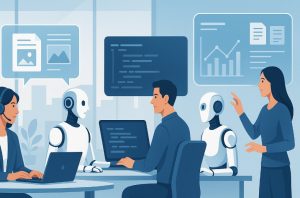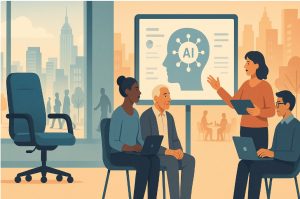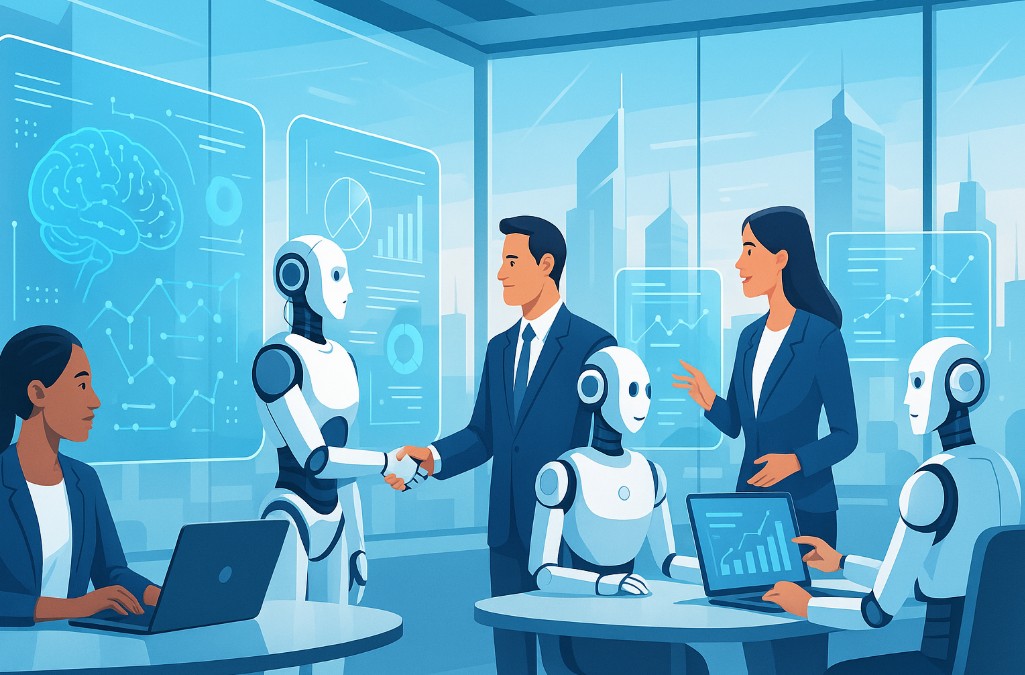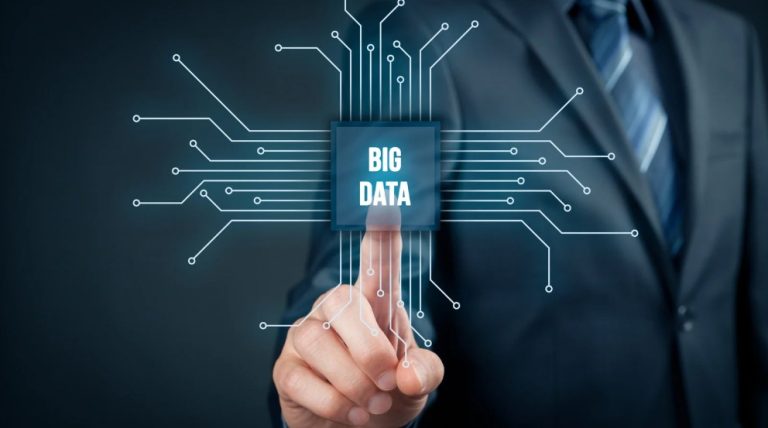The GenAI State of AI in Business 2025
As businesses across the UK and the globe rush to implement generative AI (GenAI), a critical question emerges: is it truly delivering on its promise? AI has been marketed as the great equaliser empowering startups and enterprises alike with advanced capabilities to automate, optimise, and innovate.
But new research suggests that, beneath the hype, most companies are struggling to turn AI pilots into performance.
A comprehensive report from MIT’s NANDA initiative, The GenAI Divide: State of AI in Business 2025, highlights a growing gap between a small number of breakthrough GenAI projects and a vast majority that produce little measurable impact.
Despite widespread adoption, only around 5% of enterprise AI pilots result in rapid revenue growth. This raises an uncomfortable truth: while the technology is sound, its business implementation often isn’t.
So, what’s going wrong and what separates success from stagnation?
What Is Generative AI and How Is It Being Used in Business?

Generative AI refers to artificial intelligence systems capable of producing entirely new content. Unlike earlier AI models built primarily for classification or prediction, GenAI systems can create text, design graphics, compose music, generate code, and simulate human conversation.
Tools such as ChatGPT, Jasper, and various open-source models have become central to how companies approach content creation, customer support, and even strategic decision-making.
Businesses are deploying GenAI in areas like marketing, product development, logistics, and finance. For example, a Midlands-based software firm uses a custom-built GenAI model to generate documentation and training materials, saving hundreds of hours annually.
In customer service, many UK retail brands have adopted AI-powered chatbots to manage routine queries, freeing up human agents for more complex issues.
Theoretically, GenAI opens endless possibilities but only when applied effectively. MIT’s study reveals that most enterprises fail not because of poor technology, but because they lack the right conditions for GenAI to succeed.
Why Are 95% of AI Projects Failing to Create Business Impact?
The MIT study found that only 5% of the 300 enterprise GenAI projects it reviewed achieved notable revenue acceleration.
Most failed to demonstrate any measurable return on investment. This pattern holds true even in tech-forward sectors, where expectations for innovation are highest.
The issue isn’t a lack of funding or access to tools. Instead, it’s the “learning gap” between AI technology and business integration. Many organisations adopt off-the-shelf models like ChatGPT without tailoring them to specific workflows.
These tools excel at generic tasks but struggle when faced with the structured, high-compliance environments of enterprises.
In numerous interviews, executives blamed regulatory complexity or immature models for failed projects. However, MIT’s research concludes that these are secondary issues.
The real problem is a lack of organisational readiness employees don’t know how to use the tools effectively, workflows aren’t adapted to leverage automation, and leadership often lacks clarity on what AI should accomplish.
What Are High-Performing Companies Doing Differently with GenAI?

The contrast between successful and stalled GenAI implementations is stark. The most effective companies tend to focus on specific pain points rather than deploying AI broadly without direction.
For instance, a healthcare startup in Manchester focused solely on automating insurance pre-authorisation. Within a year, the company scaled from concept to £15 million in annual revenue by addressing a real, narrow problem with a precise solution.
A second key differentiator is partnership. Companies that build GenAI tools in-house succeed about one-third of the time. By contrast, those that collaborate with specialised vendors see success roughly two-thirds of the time.
These vendors bring pre-trained models, industry-specific insights, and proven architectures, which reduce implementation time and risk.
Another common trait among high-performing firms is decentralised execution. Rather than housing AI innovation solely within central teams or “AI labs,” these businesses empower frontline managers to identify and lead AI-driven improvements.
These managers are closest to day-to-day inefficiencies and can ensure that AI tools are integrated where they matter most.
Are Businesses Misallocating Their AI Budgets in 2025?
While AI budgets are growing, their allocation is often misaligned with areas that deliver real value. The MIT report reveals that over 50% of GenAI investment is directed toward sales and marketing tools.
Yet, the strongest financial returns come from less glamorous domains like back-office automation.
In one case, a logistics company in Glasgow restructured its HR and payroll departments using a GenAI solution designed to automate documentation and compliance tasks.
The result was a 40% reduction in outsourced HR costs and a notable improvement in data accuracy. Meanwhile, competitors investing in AI-powered ad copy generators saw minimal uplift in conversion rates.
The table below illustrates the contrast between investment focus and realised returns:
| Investment Area | % of AI Budget (Avg) | ROI Rating (Based on MIT Study) |
| Sales & Marketing | 52% | Low to Moderate |
| Customer Experience | 18% | Moderate |
| Back-Office Automation | 12% | High |
| Procurement/Operations | 10% | High |
| Legal & Compliance | 8% | Moderate |
This data suggests that strategic reallocation of GenAI budgets could unlock far more value, particularly for companies operating in tight-margin industries.
Is GenAI Disrupting the Workforce or Simply Reshaping It?
One of the key fears around AI adoption is job displacement. However, the 2025 reality in the UK is more subtle. Rather than triggering mass layoffs, GenAI is leading to non-replacement of roles as they become vacant.
This trend is particularly evident in administrative, customer service, and outsourced support positions.
Employees in roles traditionally considered low-value or easily replaceable such as invoice processing or data entry are seeing their tasks absorbed by GenAI systems. This doesn’t always mean job loss.
In many cases, workers are being retrained for more strategic roles, such as AI operations, systems supervision, or client engagement.
Upskilling has become a key theme in workforce transformation. Employers are offering in-house training, AI certification programmes, and collaborative AI-human workflows that empower staff rather than marginalise them.
Forward-thinking organisations are treating AI literacy as a core professional competency, not a niche skill set.
Why Are So Many Businesses Relying on Shadow AI Tools?

Shadow AI refers to employees using unsanctioned AI tools like ChatGPT, Midjourney, or GitHub Copilot outside of IT governance frameworks. In 2025, the use of shadow AI has exploded, particularly in creative, marketing, and software development teams.
Employees turn to these tools for speed and flexibility. However, without oversight, companies face serious risks data leakage, compliance violations, and brand inconsistency.
In regulated sectors such as finance and healthcare, shadow AI can even trigger legal exposure.
Organisations are responding by developing internal AI policies, deploying monitored AI platforms, and establishing approval pathways for tool use. Nonetheless, managing the balance between innovation and control remains an ongoing challenge.
What Are Agentic AI Systems and How Are They Transforming Business?
Looking beyond static AI tools, leading organisations are now deploying agentic AI systems models capable of reasoning, remembering, and acting with autonomy within defined parameters.
These systems differ from traditional automation by making real-time decisions, adapting to new data, and learning from user interactions.
Agentic AI is being used in areas like inventory management, fraud detection, and technical support. A national telecom provider recently introduced AI agents into its network operations centre.
These agents proactively monitor signal integrity, predict system failures, and suggest maintenance actions reducing downtime by 35%.
Agentic AI points toward the next frontier of enterprise automation: systems that don’t just respond, but actively manage complexity.
How Is GenAI Being Used in Cybersecurity and Manufacturing?
In manufacturing, AI has moved beyond operational efficiency into cybersecurity. The 2025 State of Smart Manufacturing report from Rockwell Automation reveals that cybersecurity now ranks as one of the top concerns for manufacturing executives second only to inflation.
Industrial firms are using GenAI to secure converged IT and operational technology (OT) systems. These hybrid environments are notoriously hard to defend.
AI models trained on system logs and threat patterns can now detect anomalies, flag intrusions, and suggest countermeasures far faster than human analysts.
However, as the demand for AI in security grows, manufacturers face new challenges: a shortage of skilled cybersecurity professionals, rising labour costs, and the need for AI tools that align with operational workflows.
The convergence of cybersecurity and AI now represents one of the most critical investment areas for the industrial sector.
What Are the Broader Societal Impacts of Workforce Shifts in AI?

Beyond the boardroom and back office, GenAI is also reshaping societal structures. A striking example: in the United States, nearly 300,000 Black women left the workforce in 2025, according to research by Katica Roy, CEO of Pipeline.
This exodus has long-term consequences not just for equity, but for corporate innovation and succession planning.
The loss of diverse talent erodes the potential for inclusive leadership, particularly in technology-driven sectors where representation is already lacking. Businesses committed to long-term growth must now consider how AI transformation intersects with diversity, equity, and inclusion. It’s not just a moral imperative it’s a strategic one.
Final Thoughts: What Will Define GenAI Success in the UK Moving Forward?
As the GenAI divide widens, the UK faces both a challenge and an opportunity. While many organisations continue to stumble through misaligned implementations and hype-driven investments, others are building quietly effective models of AI transformation focused, grounded, and human-centred.
To close this divide, businesses must shift from ambition to precision. That means defining narrow use cases, forming smart partnerships, empowering frontline innovation, and aligning AI strategy with workforce development.
GenAI isn’t just another tool; it’s a new way of doing business. And in 2025, how UK companies approach it may determine not just their competitiveness, but their survival.
Frequently Asked Questions
Why are most GenAI projects in business not delivering results?
Poor integration into existing workflows, overreliance on generic tools, and lack of strategic clarity are common reasons for failure.
Should companies build GenAI tools internally or buy from vendors?
Data shows vendor partnerships are twice as likely to succeed compared to internal development, particularly in regulated sectors.
Is AI replacing human jobs in 2025?
Rather than mass layoffs, many roles are quietly phased out as they become vacant. Upskilling and role evolution are more common trends.
What is shadow AI and why is it problematic?
Shadow AI involves employees using unapproved AI tools. While useful, it poses risks around security, data privacy, and compliance.
What industries are leading GenAI adoption in the UK?
Retail, logistics, healthcare, and finance are currently at the forefront of AI deployment and experimentation.
How can back-office automation with AI improve ROI?
Automating administrative processes cuts costs, improves accuracy, and frees up human resources for higher-value tasks.
What are agentic AI systems and why do they matter?
Agentic AI refers to autonomous systems that learn, adapt, and act independently offering a more dynamic form of enterprise automation.







